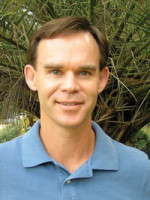Universities Uniting by Paul Fisher

Writing this essay reminded me of “A Christmas Carol.” There are different futures for Extension depending which path we collectively choose to take.
When the Agricultural Extension Service was created by Congress in 1914, agriculture was a dominant player in the U.S. economy. Recent trends in global food supply, biofuel and sustainability have led to a “rediscovering” of agriculture by the U.S. media. But agricultural production now represents less than 1 percent of the Gross Domestic Product (GDP) in our service-based economy.
If our industry values the outreach and applied research components of Extension in the future, we need to lobby for limited resources against other worthwhile competing societal needs. In the Spanish language there is an expression–no llora, no mama–and it will take a strong collective voice (llorar) to keep Extension services as a high policy priority (la mama).
I have been fortunate to work with growers in several countries. In most places outside the U.S., there never has been an Extension service, or the Extension program has been eliminated through budget cuts.
Here are the consequences: Growers become accustomed to a “user-pays” approach for any service, including information. A few large growers travel widely overseas to attend educational events such as OFA Short Course and Horti Fair. There, Extension agents still exist and growers hire private consultants or develop in-house R&D programs.
Many smaller growers are stuck in time without access to new information. Businesses become secretive without the Extension framework to share knowledge. Industry fills the void, mainly through technical managers and salesmen who provide good quality information but ultimately must sell product.
The process of moving new research technology from the lab to industry starts to break down. Research splits between long-term, laboratory-based projects and short-term product testing (spray and pray). The middle ground, developing research solutions to real industry problems, becomes lost.
Last year, I visited the renowned Stockbridge Technology Center, a greenhouse research facility in England where scientists were still conducting good applied research and seeking funding in the era of user pays, but their largest project focused on health benefits of marijuana.
OK, enough doom and gloom. I am actually optimistic about the future. Many states have replaced retired floriculture faculty, and there is a new crop of capable young faculty hired recently in places like Florida, Indiana, Kentucky, Maine, Michigan and New York.
We have to be more creative about funding our Extension programs, and some leading companies and organizations are stepping up to be very supportive. For example, a group of university faculty and companies that share an interest in water quality has started the Water Education Alliance for Horticulture Extension program on water recirculation and treatment.
Working with groups of competing companies reduces bias, helps prioritize scientist efforts and taps into a huge amount of industry knowledge. For example, way more Ph.D.’s specializing in media and nutrition are in industry compared to nutrition experts in universities. These days, all my workshops have sponsorships and a mix of university and industry expert presenters.
We all have to get used to publicity for Extension workshops and publications looking like a NASCAR sports car. As university professors are faced with the need for near 100 percent industry funding of operating costs, we strive to walk a fine line to maintain objectivity in our programs.









